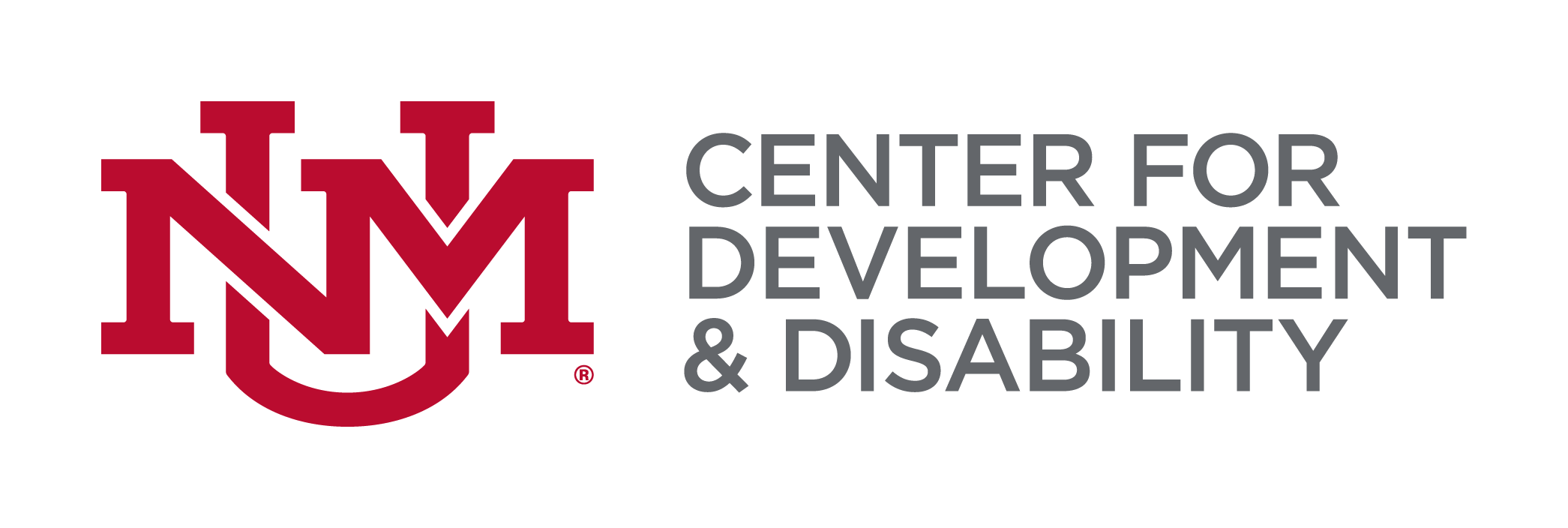Mary Boehm, MA, CCC-SLP
Autism and Other Developmental Disabilities Programs Division
Download the printable brief version of this post here.
What is Autism Spectrum Disorder?
Autism Spectrum Disorder (ASD) is a neurodevelopmental condition; this means that ASD affects how a person’s brain develops. When a person has ASD, there are problems with social communication, and repetitive patterns of behavior or restricted interests. The current definition for Autism Spectrum Disorder comes from the Diagnostic and Statistical Manual of Mental Disorders, Fifth Edition (DSM-5). Autism is a spectrum because there is a range of symptoms and severity levels. Some people have mild ASD, but other people have more severe symptoms and need a lot of support.
People who have ASD are different from one another in important ways. Some people with ASD also have intellectual disability (called mental retardation in the past). However, people with average or above average intelligence may also be diagnosed with ASD. Some people with Autism may have language impairment, and some may not develop spoken language. People with ASD may also have other medical, developmental or psychological issues.
Who Can Diagnose ASD?
Autism Spectrum Disorder can be diagnosed by a professional (such as a psychologist or behavioral pediatrician) trained to use the DSM-5. Professionals need training, experience, and expertise with ASD and other disabilities.
To make an ASD diagnosis, professionals need to assess a child’s social interaction, communication, play, and other behaviors. Information comes from parent or caregiver reports, as well as observing and talking to the child. A complete evaluation for ASD includes a health history.
A full evaluation will assess a person’s strengths and needs in many areas of development. Usually, this involves professionals from different fields working as a team. Other assessments measure development or cognitive ability, communication and language skills, motor skills and sensory processing. Adaptive skills assessment will show how well a person functions in daily living skills like self-care. An evaluation may include assessments to understand problem behaviors.
What kind of testing is recommended to diagnose ASD?
Developmental screening: A screening can be completed in a short amount of time to help determine if a child should be referred for more testing. At regular visits, your child’s doctor will ask questions to find out what new skills your child has learned. This will include how the child is interacting with parents and other children, how the child communicates and plays.
Autism screenings: The American Academy of Pediatrics recommends screening all children for ASD at regular doctor visits when they are 18 and 24 months old. The Modified Checklist for Autism in Toddlers, Revised with Follow-up (M-CHAT-R/F®) is a parent questionnaire to identify red flags for ASD. If doctors have concerns, they will refer for further testing.
Often families have to wait for an ASD evaluation with qualified providers. It is best to go ahead with other testing and access available services while you are waiting.
Autism diagnostic evaluation: For making a diagnosis, professionals gather information about social communication impairments and patterns of behavior seen in ASD. The Autism Diagnostic Observation Schedule, Second Edition has been researched to use for identifying features of ASD. It has four different modules based on different levels of language development. The evaluation will also include an in-depth history, usually by interview with a parent or caregiver. There are other rating scales and checklists that can be used to gather information.
Developmental assessment: Developmental assessments look at skills a young child uses in many areas—motor skills, problem-solving, communication, social-emotional, play, self-care. Skills are often organized by the age-level that most children master skills, to describe how a child’s functioning compares to what is typical development.
Cognitive testing: Cognitive testing is used to measure intellectual ability, and whether a person has intellectual impairment in addition to ASD. Also known as IQ tests, cognitive tests show how a person thinks and solves problems. These are standardized tests that compare how a person functions with other people of the same age. Cognitive tests can measure verbal ability—the ability to understand and use words, as well as non-verbal ability—understanding and solving problems without words. Some people with ASD perform much better on nonverbal cognitive tests, but oth-ers may have strengths in verbal skills. This information is used for planning and teaching.
Adaptive behavior assessment: Adaptive behavior refers to skills that are used in real life. It includes skills for communication, daily living at home and in the community, social skills including relating to others, coping, and skills for school and work. As with cognitive skills, expected adaptive skills change as a person grows up. This type of assessment uses rating scales to report how often a person uses skills without help. The scores compare a person’s skills to what is expected for most people at the same age. Adaptive assessments are used with cognitive scores to identify intellectual impairment. This information also helps for choosing the skills to teach to increase independence.
Speech-language assessment: A speech-language pathologist (SLP) gathers information about communication development. This includes speech (using sounds to form words), listening comprehension and expressive language. If a person is not using words, the SLP would observe other ways the person communicates for reasons like making requests or protesting. The SLP can identify delays or other communication problems. For verbal people with ASD, speech-language assessment includes information on pragmatic language, i.e., the ability to use socially appropriate language and nonverbal cues for different reasons.
What other testing might be recommended?
Medical tests: Medical tests may be needed to rule out other health conditions that can be related to ASD. Genetic tests can identify disorders such as Fragile X or genetic mutations. A neurological evaluation includes an examination and may include tests to show brain activity (EEG) or an image of the brain (MRI). This may be recommended if there are concerns about seizures or other conditions affecting the brain. Other medical tests or consultations may be recommended if there concerns about sleep, diet and nutrition, or other health problems.
Occupational Therapy assessment: Occupational therapists (OT) are experts in development of functional, everyday skills, such as play and self-help. An OT assessment provides information about fine motor skills, adaptive skills and sensory processing. When there are also concerns about gross motor (large muscle movements) development, a physical therapy evaluation may also be recommended.
Educational eligibility: School districts must follow federal and state guidelines for special education to identify students who are eligible for services under different categories, including Autism. The school district may complete a full evaluation or use testing from outside providers. In addition, school districts are required to show if the student needs special education services. This can be based on information about the student’s academic skills (e.g., reading or math), behavior in school, and any interventions that have been already tried.
Neuropsychological testing: Neuropsychological testing provides information about how a person processes different kinds of information to show strengths and weaknesses. A neuropsychological battery may include assessments for cognitive ability, adaptive behavior, attention, memory, and academic achievement (e.g., reading, writing and math). Neuropsychological testing is useful if there are concerns about learning disabilities, attention, or other processing problems.
Do people who were diagnosed before the DSM-5 need new evaluations?
No, if individuals had a well-established diagnosis of Autistic Disorder, Asperger’s or Pervasive Developmental Disorder-Not Otherwise Specified, they will still have a diagnosis under the new label Autism Spectrum Disorder. If they did not have a full evaluation in the past, they should have testing to clarify their diagnosis.
Where can I go for ASD diagnostic evaluation in New Mexico?
UNM Center for Development and Disability (CDD) Clinical Evaluation Services Unit provides comprehensive, interdisciplinary team evaluations for medical diagnosis of Autism and other developmental issues. The CDD is a department of the University of New Mexico Health Sciences Center, Department of Pediatrics.
Early Childhood Evaluation Program (ECEP): for children under 3 years of age. Contact ECEP at (505) 272-9846 or toll free at 1-800-337-6076
Autism Spectrum Evaluation Clinic (ASEC): for ages 3 to 21. For more information, call (505)272-9337, or 1-800-270-1861
Medicaid or private insurance are billed for evaluations, but the are no additional charges to families for ECEP and ASEC evaluations.
What are the Criteria for ASD Diagnosis in the DSM-5?
Social Communication- For an ASD diagnosis, there are impairments in all three of the following areas:
- Impaired social-emotional reciprocity
- May show little interest in others and prefer to be alone, or may be interested, but not have skills to play, talk, share or get along with others
- May not respond to hearing their names or when people talk with them (but hear other sounds)
- May have trouble understanding or talking about feelings
- May not initiate interaction, or initiate in unusual ways
- Problems with nonverbal skills to communicate
- May not use direct eye contact
- Facial expressions may not show a range of feelings
- May not use variety of gestures, or may not point to show interest
- Relationship deficits
- May have difficulty making or keeping friends
- May have difficulty sharing pretend play
- May have difficulty understanding relationships
Restricted, repetitive patterns of behavior- There are at least two of the following types of behavior:
- Stereotyped or repetitive movements (hand-flapping), use of objects (lining up toys), or speech (echoed speech, repeating scripts from movies)
- Need for sameness, inflexible routines, rituals (very upset with schedule changes)
- Highly restricted, intense interests (carry unusual objects everywhere, talk about certain topics over and over)
- Tends to over-respond or under-respond to sensory information (not noticing pain or temperature), or have unusual interest in sensory input (e.g., often smelling or touching objects that are not food, look at lights or moving objects for a long time, look closely at parts of objects)
Symptoms develop in early childhood but may not be a concern until the demands for social communication increase, such as when a child enters school. Some people with ASD learn good coping strategies, and their symptoms may become less noticeable.
Resources:
- American Psychiatric Association: Diagnostic and Statistical Manual of Mental Disorders, Fifth Edition. Arlington, VA, American Psychiatric Association, 2013.
- Lord, Catherine, Corsello, Christina, and Grzadzinski, R. (2014) Diagnostic instruments in autistic spectrum dis-orders. Handbook of autism and pervasive developmental disorders, fourth edition. Volume 2 Assessment interventions and policy. Wiley. Hoboken, NJ.
- Stone, Wendy L. and DiGeronimo, Teresa F. (2006) Does my child have autism? A parent’s guide to early detec-tion and intervention in autism spectrum disorders. Jossey-Bass. San Francisco, CA.
- Volkmar, Fred R. et al (2014) Clinical evaluations in multidisciplinary settings. Handbook of autism and perva-sive developmental disorders, fourth edition. Volume 2 Assessment interventions and policy. Wiley. Hoboken, NJ.



4 thoughts on “How is Autism Diagnosed?”
Thank you very much Mrs. Boehm for this information. It is very helpful!
I’m glad you found the information useful!
Can an abnormal EEG be basis for an autism diagnosis?
No, abnormal results on an EEG (electroencephalogram) are not sufficient to diagnose Autism Spectrum Disorder. EEGs record electrical activity of the brain. An EEG may be recommended when there are concerns about seizures, which can be associated with ASD in some individuals. A neurologist may diagnose ASD based on observed behaviors and symptoms, and recommend additional evaluations.